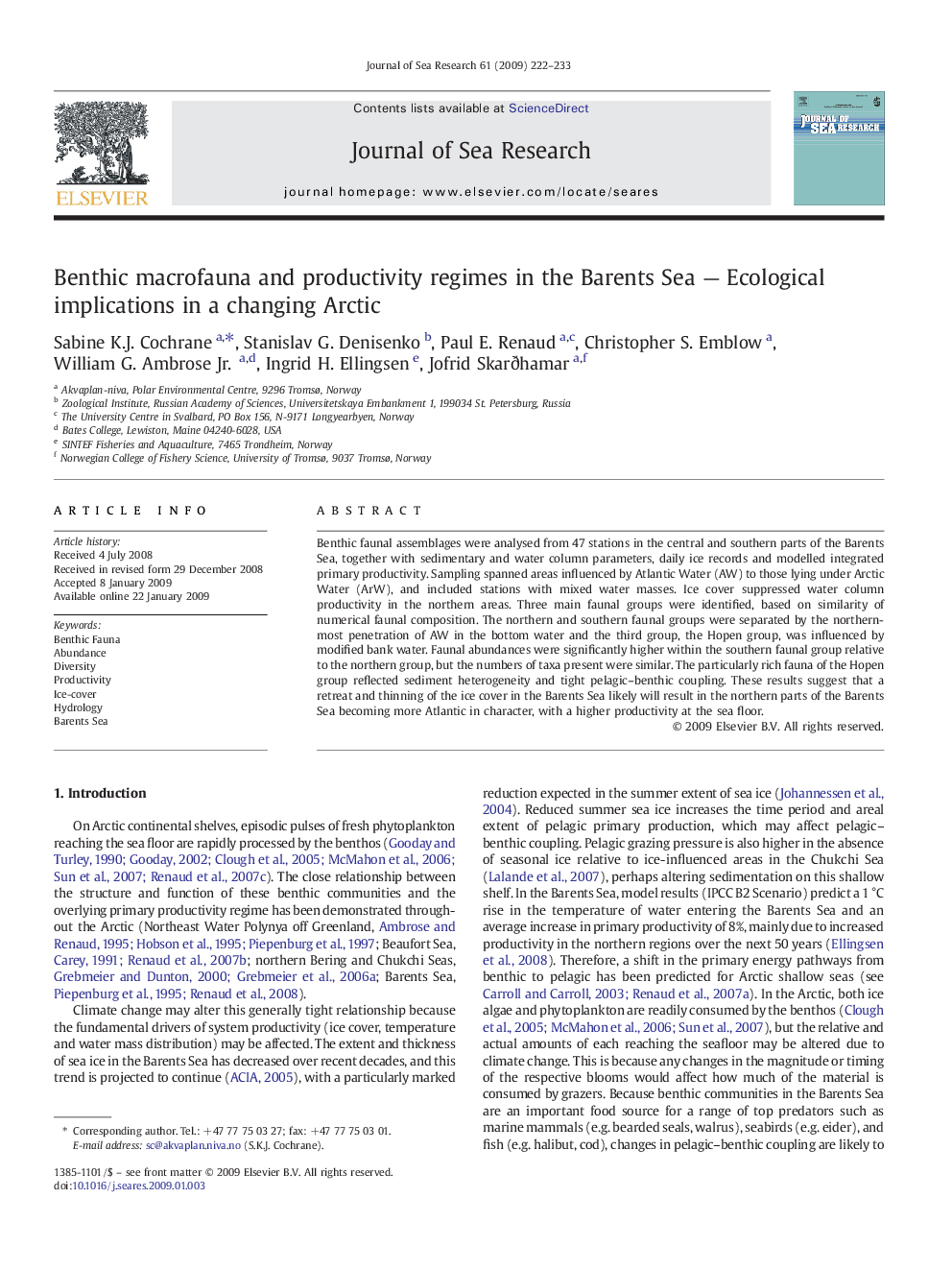| Article ID | Journal | Published Year | Pages | File Type |
|---|---|---|---|---|
| 4550218 | Journal of Sea Research | 2009 | 12 Pages |
Benthic faunal assemblages were analysed from 47 stations in the central and southern parts of the Barents Sea, together with sedimentary and water column parameters, daily ice records and modelled integrated primary productivity. Sampling spanned areas influenced by Atlantic Water (AW) to those lying under Arctic Water (ArW), and included stations with mixed water masses. Ice cover suppressed water column productivity in the northern areas. Three main faunal groups were identified, based on similarity of numerical faunal composition. The northern and southern faunal groups were separated by the northernmost penetration of AW in the bottom water and the third group, the Hopen group, was influenced by modified bank water. Faunal abundances were significantly higher within the southern faunal group relative to the northern group, but the numbers of taxa present were similar. The particularly rich fauna of the Hopen group reflected sediment heterogeneity and tight pelagic–benthic coupling. These results suggest that a retreat and thinning of the ice cover in the Barents Sea likely will result in the northern parts of the Barents Sea becoming more Atlantic in character, with a higher productivity at the sea floor.
